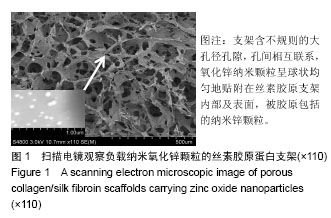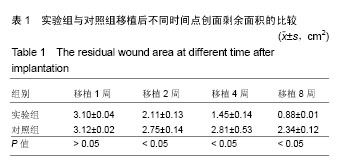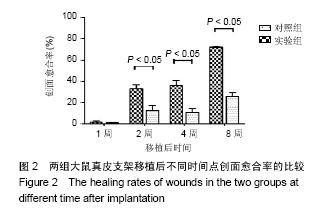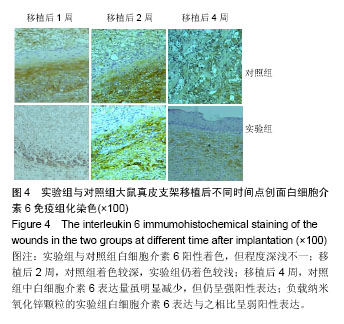| [1] Balasubramani M,Kumar TR,Babu M.Skin substitutes: a review.Burns.2001;27(5):534-544.[2] van der Veen VC,van der Wal MB,van Leeuwen MC,et al. Biological background of dermal substitutes. Burns. 2010; 36(3):305-321.[3] Bottcher-Haberzeth S,Biedermann T,Reichmann E.Tissue engineering of skin.Burns.2010; 36(4):450-460.[4] Cao Y,Wang B.Biodegradation of silk biomaterials.Int J Mol Sci.2009;10:1514-1524.[5] Padol AR,Jayakumar K,Shridhar NB,et al.Safety evaluation of silk protein film (a novel wound healing agent) in terms of acute dermal toxicity, acute dermal irritation and skin sensitization.Toxicol Int. 2011;18(1):17-21.[6] Wharram SE,Zhang X,Kaplan DL,et al.Electrospun silk material systems for wound healing.Macromol Biosci. 2010; 10(3):246-257. [7] Moiemen NS,Vlachou E,Staiano JJ,et al.Reconstructive surgery with Integra dermal regeneration template: histologic study, clinical evaluation, and current practice.Plast Reconstr Surg.2006;117(7 Suppl):160S-174S.[8] Stern R,McPherson M,Longaker MT.Histologic study of artificial skin used in the treatment of full-thickness thermal injury.J Burn Care Rehabil.1990;11(1):7-13.[9] Pieper JS,van Wachem PB,van Luyn MJA,et al.Attachment of glycosaminoglycans to collagenous matrices modulates the tissue response in rats.Biomaterials.2000;21(16):1689-1699.[10] Anderson CR,Ponce AM,Price RJ.Immunohistochemical identification of an extracellular matrix scaffold that microguides capillary sprouting in vivo.J Histochem Cytochem. 2004;52(8): 1063-1072.[11] Gafni Y,Zilberman Y,Ophir Z,et al.Design of a filamentous polymeric scaffold for in vivo guided angiogenesis.Tissue Eng. 2006;12(11):3021-3034.[12] Wang J,Yang Q,Cheng N,et al.Collagen/silk fibroin composite scaffold incorporated with PLGA microsphere for cartilage repair.Mater Sci Eng C Mater Biol Appl.2016;61:705-711.[13] Ju HW,Lee OJ,Lee JM,et al.Wound healing effect of electrospun silk fibroin nanomatrix in burn-model.Int J Biol Macromol.2016;85:29-39.[14] 曹优明,郑仕远,张辉,等.纳米氧化锌的制备方法与应用[J].渝西学院学报:自然科学版,2003,2(4):15-18.[15] 高艳玲,刘熙,王宗贤,等.纳米金属氧化物对食品污染菌的杀、抑能力研究叨[J].食品科学,2005,26(4):45.[16] Kert M,Jazbec K,?erne L,et al.The influence of nano-ZnO application methods on UV protective properties of cotton. Acta Chim Slov.2014;61(3):587-594.[17] Yu LP,Fang T,Xiong DW,et al.Comparative toxicity of nano-ZnO and bulk ZnO suspensions to zebrafish and the effects of sedimentation, ˙OH production and particle dissolution in distilled water.J Environ Monit. 2011;13(7): 1975-1982.[18] Kumar PT,Lakshmanan VK,Biswas R,et al.Synthesis and biological evaluation of chitin hydrogel/nano ZnO composite bandage as antibacterial wound dressing.J Biomed Nanotechnol. 2014;8(6):891-900.[19] Kumar PT, Lakshmanan VK, Anilkumar TV,et al.Flexible and microporous chitosan hydrogel/nano ZnO composite bandages for wound dressing: in vitro and in vivo evaluation. ACS Appl Mater Interfaces. 2012;4(5):2618-2629. |
.jpg)






.jpg)
.jpg)